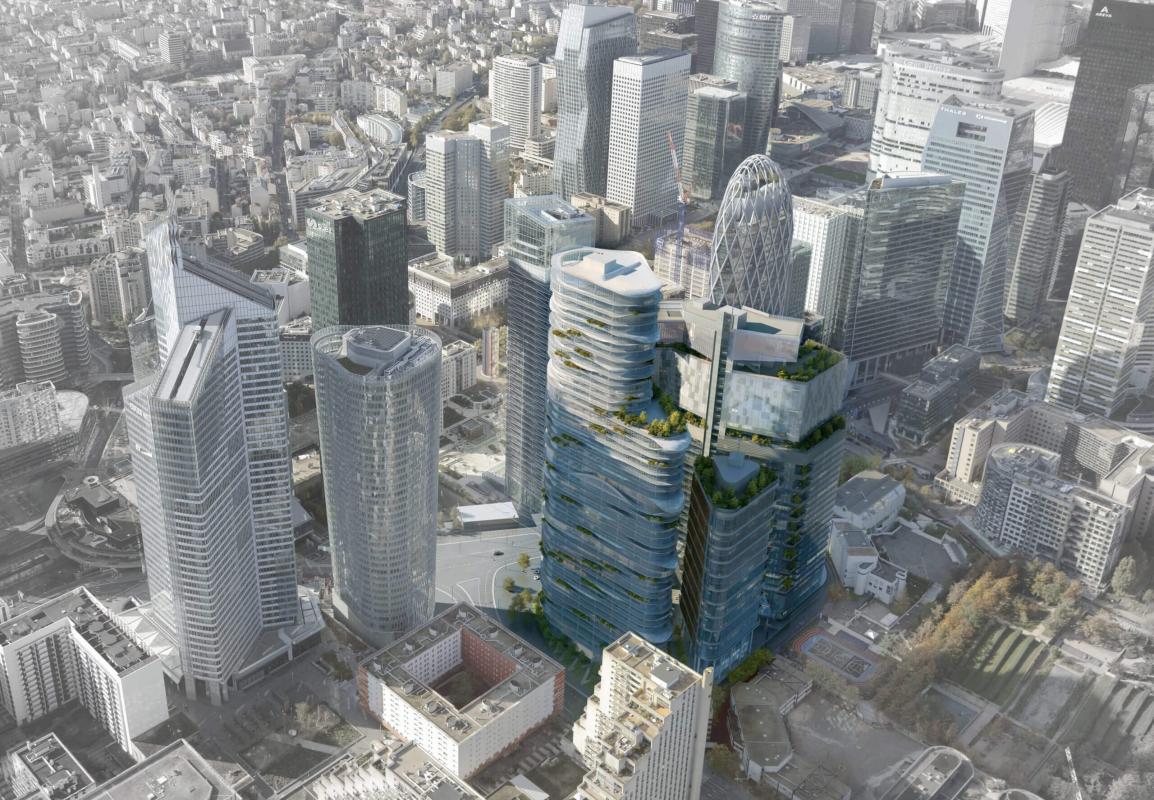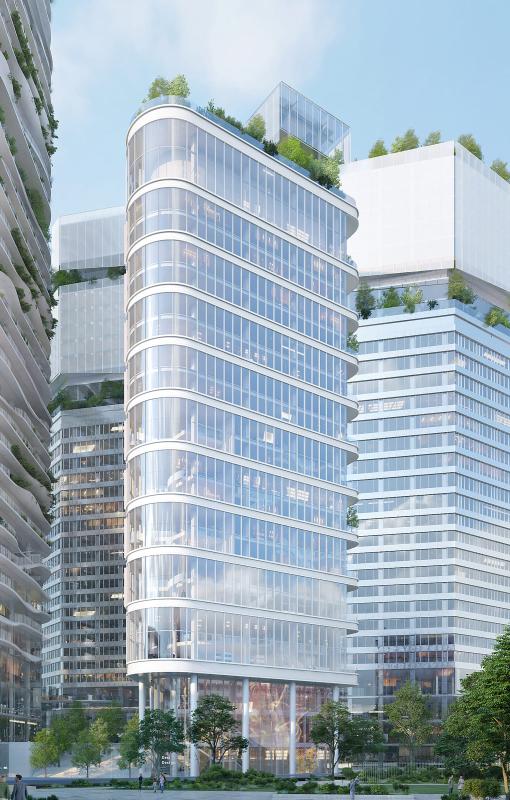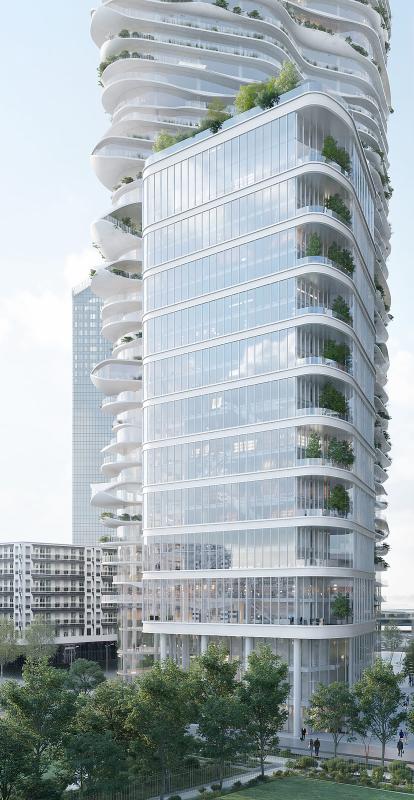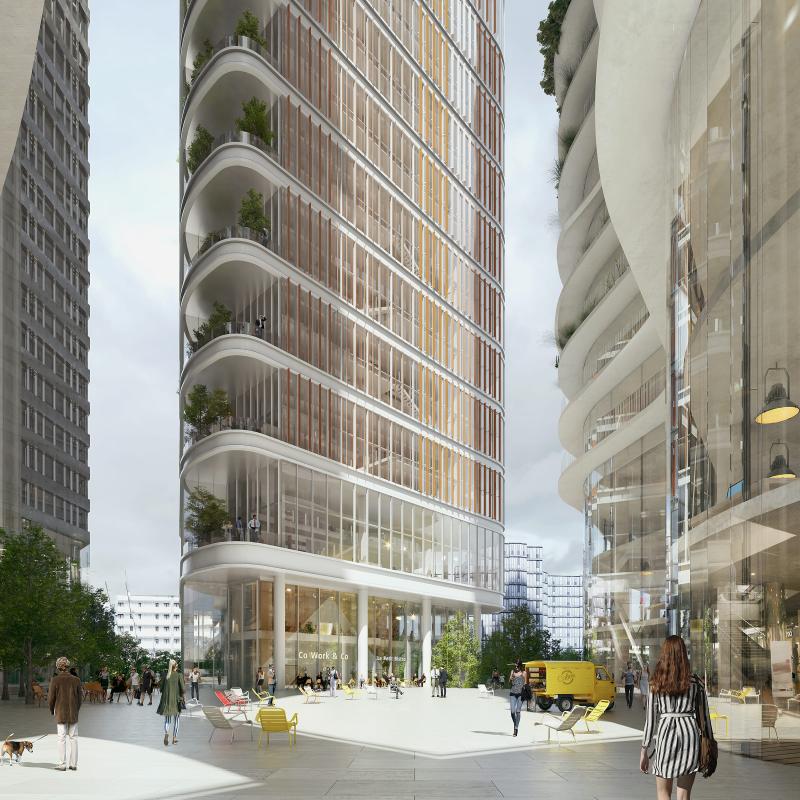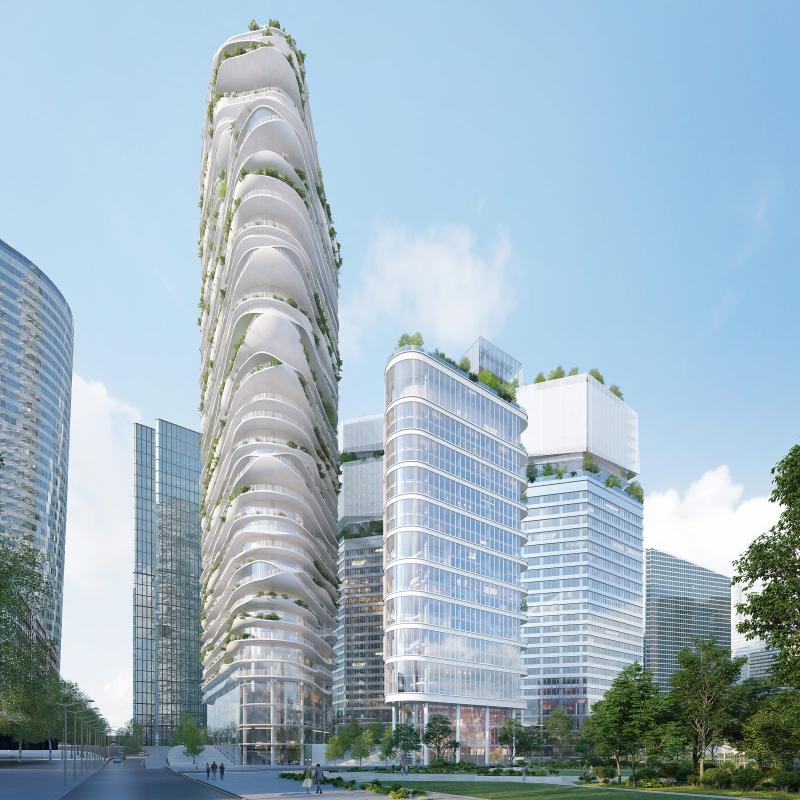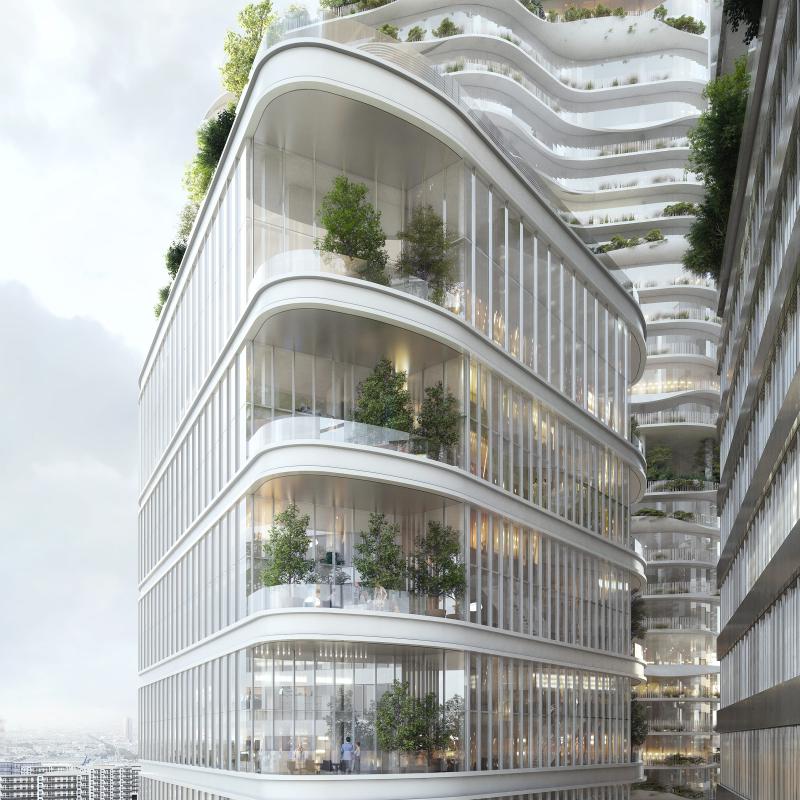ODYSSEY / Tour D
Redevelopment of the Miroirs district in La Défense
Formerly known as Les Miroirs, the Odyssey project consists of the demolition and reconstruction of a 1980s development previously occupied by materials manufacturer Saint Gobain. Located in the Alsace district of La Défense, the plot contained three tall volumes of different uses (offices, housing, activities), united on a shared base, with an overall floor area of around 140,000 m2. From a regulatory point of view, the complex is considered as one single high-rise building.
Tower D accommodates a mixed-use programme of offices / co-working spaces and accommodation / co-living units, with shared facilities and services.
The particularity of Tower D is its key position between the two other towers. This position allows, via a redesign of the base, the creation of an urban continuity between the base and the lower street level. The tower also constitutes the entrance to the site from the north-east. The isosceles triangular geometry of the tower is derived from its strategic position at the crossroads of the new plaza developed on two levels. With the same concern for fluidity, the corners of the tower are treated as rounded facades with curved glazing and loggias, reducing the visual impact of the volume and contributing to its impression of slenderness.
CroMe Studio, founded by Nayla Mecattaf and Jean-Luc Crochon, proposes a project combining masterful urban design with a reading at the scale of the tower by means of meticulously executed facades on a 900mm-wide grid. This ensures optimal functionality, whether for offices or accommodation.
T/E/S/S has developed the architectural concepts of the block facades for the standard floor plates, including parallel projecting frames for natural ventilation and emergency heat and smoke extraction, and a steel curtain-wall facade on the ground-floor.
A particularity of the facades is that the regulatory fire barrier spandrel panel is situated every second floor. This opens the way for a freedom in the arrangement of horizontal bands and a transformation of the scale of the tower by visually removing every other floor. The facade is composed of 900mm-wide blocks, the width of the grid. Nearly a third of the facade is composed of opening windows, which also serve for emergency heat and smoke extraction.
The frame of the ground-floor curtain wall is in T and double-T steel built-up sections in order to express the prominent, dynamic profiles.
The roof terrace houses an outdoor summer bar and provides access to the maintenance platform.
On the plaza level, the tower sits on the main structure’s columns. This allows for the facades to be set back in order to liberate public space. The height of the facade varies from one to three storeys depending on the level of the plaza slab and the public stairways that link the levels.
The flexibility requested for the nature of future uses of the 20 standard floor plates, for either offices or tourist accommodation for example, constitutes an important constraint on the required thermal performance of the facades to meet all requirements. In order to optimize the space, the lift shaft is off-set on the facade, allowing natural light into the spaces that are thereby upgraded. The coexistence of the project’s neighbouring towers led to the installation of privacy screens on certain facades in order to reduce the risk of being overlooked.

